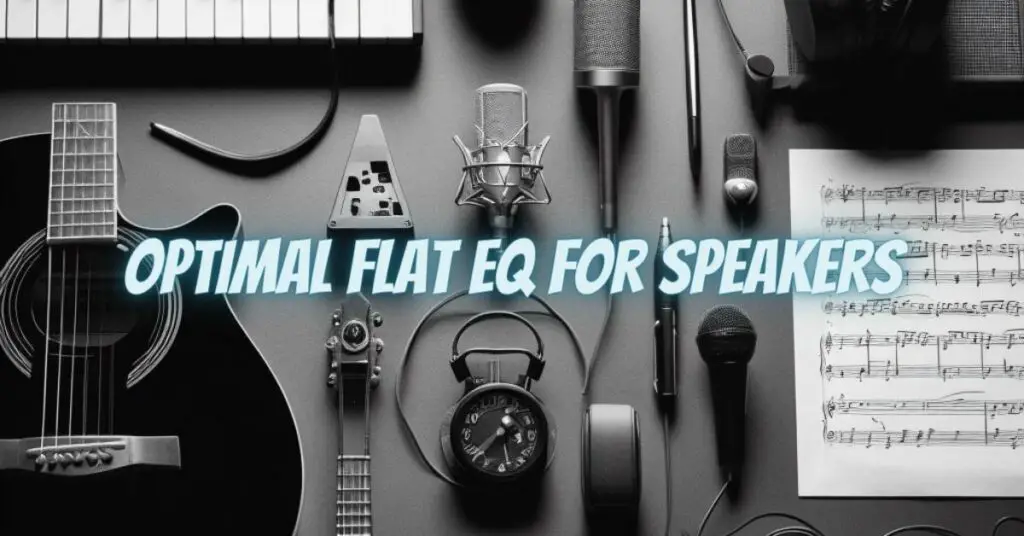The choice of EQ settings for your speakers can significantly influence your listening experience. Among the many options available, the idea of a “flat” EQ is often presented as a reference point for achieving audio fidelity and neutrality. However, the question of whether a flat EQ is the best choice for speakers is not a one-size-fits-all answer. In this article, we’ll explore the concept of a flat EQ for speakers, its advantages, its potential limitations, and how personal preferences and the listening environment play a vital role in the decision-making process.
Understanding a Flat EQ for Speakers
A flat EQ for speakers refers to a setting where all audio frequencies are reproduced at the same level or amplitude, without any frequency boosts or cuts. The goal is to achieve a neutral and balanced representation of sound.
Advantages of a Flat EQ for Speakers
- Accuracy and Transparency: A flat EQ aims to provide accurate and transparent audio reproduction. This can be advantageous in situations where you want to hear audio as it was intended by the producer or artist.
- Reference Listening: A flat EQ serves as a reference point for evaluating the characteristics of speakers and audio equipment. It allows audio professionals and enthusiasts to assess the quality and performance of their sound system.
- Consistency: A flat EQ setting ensures that the sound remains consistent across various listening environments and audio systems. This can be valuable for comparing audio equipment and making objective judgments.
Limitations of a Flat EQ for Speakers
- Subjectivity: The perception of a “flat” EQ can vary from person to person. What one individual considers flat and neutral might not align with another person’s preferences.
- Room Acoustics: The acoustics of the listening environment can significantly affect how audio is perceived. A flat EQ may not address room reflections, standing waves, and other factors that can influence sound quality.
- Genre and Style: Different types of music and audio content may benefit from tailored EQ settings. Genres like hip-hop or electronic dance music may require bass boosts, while classical music might require a more balanced approach.
- Personal Preferences: Ultimately, personal preferences play a substantial role in determining the best EQ settings for speakers. What sounds “good” can vary widely based on individual taste and listening habits.
When Is a Flat EQ Best for Speakers?
A flat EQ for speakers is best suited for situations where accuracy and transparency are essential. These include:
- Audio Production: In recording studios and post-production environments, a flat EQ setting serves as a reference point for creating audio that will translate well to different playback systems.
- Analytical Listening: Audiophiles and audio professionals who engage in critical listening or audio analysis can benefit from a flat EQ to assess audio equipment and recordings objectively.
- Reference Point: A flat EQ can be a valuable starting point for evaluating the characteristics of audio systems, ensuring that they faithfully reproduce the original source.
Personalized EQ for Speaker Enjoyment
In most real-world listening scenarios, speakers are not exclusively used for analytical listening or audio production. They are part of our entertainment systems, providing enjoyment and relaxation. In these cases, personal preferences often take precedence.
Whether you prefer a more bass-heavy sound, a brighter treble, or a balanced midrange, the best EQ setting for your speakers is the one that delivers the listening experience you enjoy the most. To find your ideal EQ settings, consider your favorite music genres, your room’s acoustics, and your personal tastes. Experimentation and adjustment are key to finding the perfect balance of sound for your specific speaker setup and listening environment.
The debate over whether a flat EQ is best for speakers underscores the importance of balancing audio fidelity with personal preferences and the listening environment. While a flat EQ can provide accurate and transparent audio reproduction, it may not always align with the goals of enjoyable and engaging listening experiences. The best EQ setting for speakers is ultimately a matter of personal choice and the desired outcome, whether it’s analytical assessment, audio production, or immersive enjoyment.


